Realistic Expectations For Rookie Tight Ends In 2023 Fantasy Football
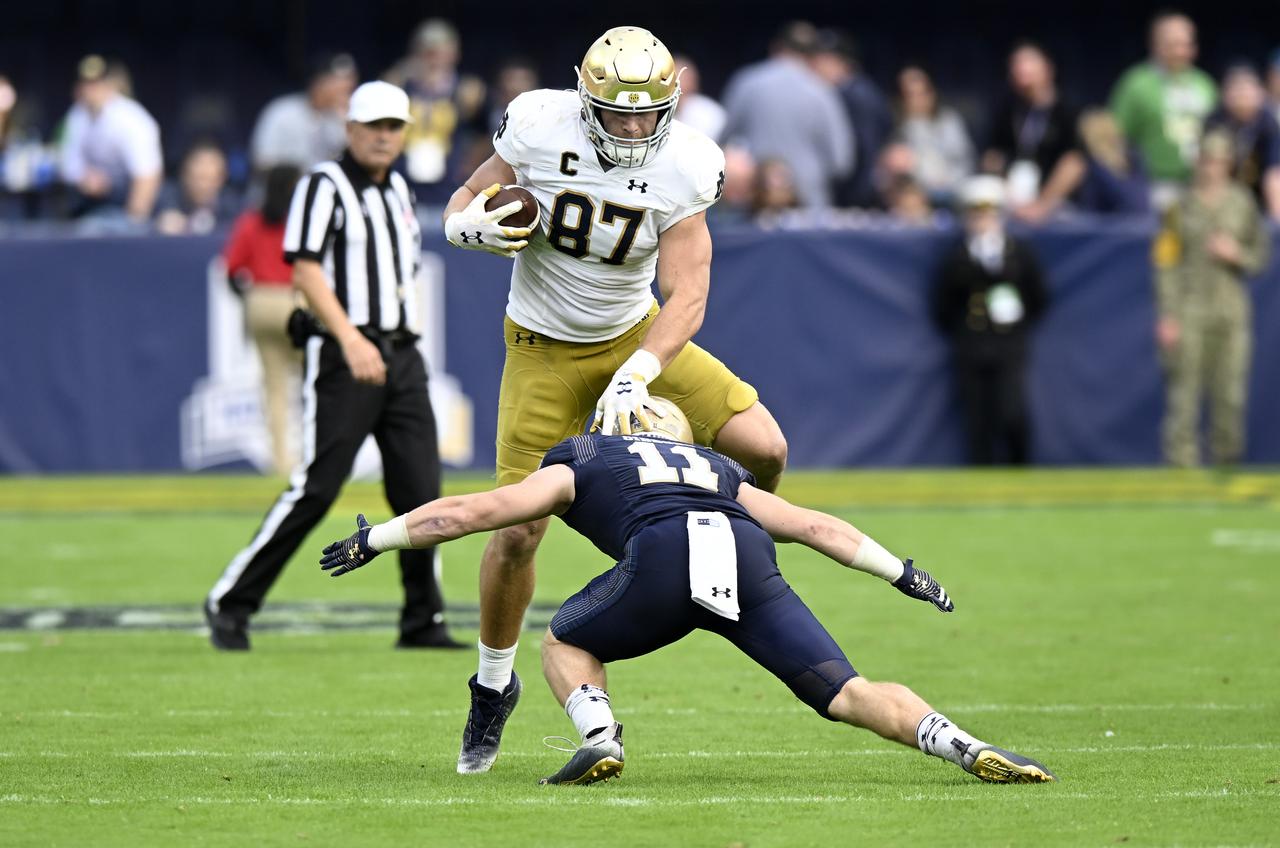
You might be sick of hearing about it, but the 2023 class of tight ends is being referred to as one of the best groups in years. What does that mean for best ball and fantasy football though? Year after year people talk about rookie tight ends not being a fantastic bet for fantasy production, so let’s take a deeper look at how rookies have performed over the course of the last couple of decades to get a better picture and help you decide how aggressively you should be targeting the 2023 class in your upcoming drafts.
In the last ten years, 112 tight ends have been drafted, with 17 in 2022 being the only time more than 13 were selected. For the purposes of the first part of this article, we’ll ignore undrafted free agents, as only two have finished inside the top 20 Half Point PPR tight ends in their rookie seasons, dating back as far as 2003 (Antonio Gates & Tim Wright). During this ten-year sample, the average of total games played by rookie tight ends has consistently varied from year to year. 2020 is notably low in all metrics and it’s worth mentioning that this was the year the Covid pandemic prevented rookies from having a normal training camp, hampering development somewhat.
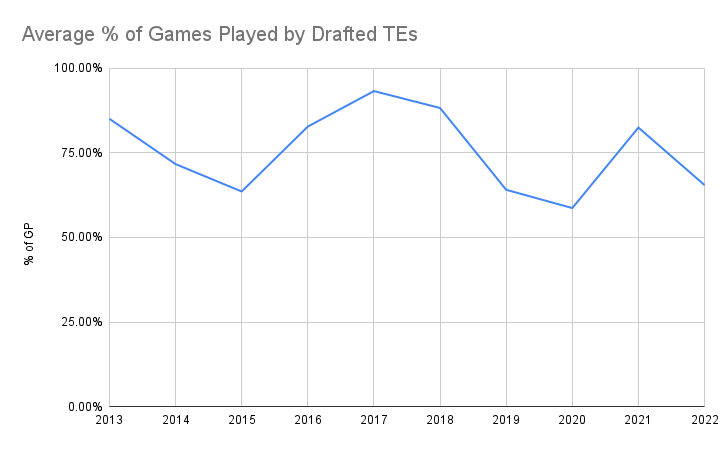
If we dive a little deeper though we can see noticeable changes. It’s fair to say that every year a reasonable chunk of tight ends drafted aren’t making a fantasy impact and generally speaking the fantasy production that does come, arrives from players who were drafted within the first three rounds. Since 2013 Will Dissly is the only rookie to have been drafted outside the first three rounds and finish inside the top 20 tight ends in Half PPR points per game. Typically it’s those rookies drafted within the first three rounds that pick up the most hype over the course of an offseason, so we’ll focus more on them for now.
Except for occasional small fluctuations, it’s apparent that tight ends who are drafted aren’t playing many more snaps than they were ten years ago. The chart below shows the average snap percentage by all tight ends drafted in blue, as well as those drafted in rounds 1-3 in red.
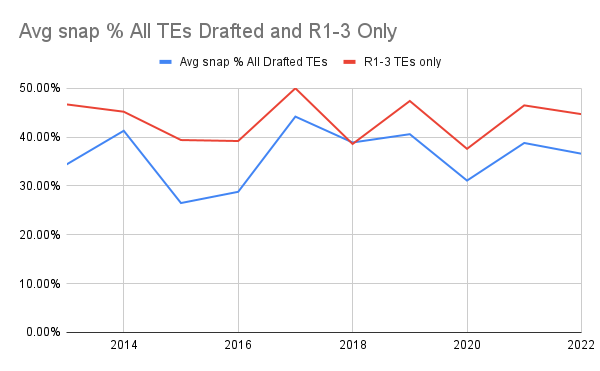
We’ve established that tight ends, particularly those with good draft capital, aren’t playing at a notable amount more than they used to be, but are they being more productive than they were ten years ago? In terms of earning targets, tight ends drafted in rounds 1-3 have seen a slight increase. In 2013 at the start of the sample, Jordan Reed was enjoying one of the best fantasy tight end rookie seasons of all time, after 2013, average targets dipped somewhat for a few years before starting to trend upwards. 2020’s miserable Covid year, however, brought that average right back down. If remove the 2020 blip, we can see that since 2016 tight ends generally earn slightly more targets than they used to.
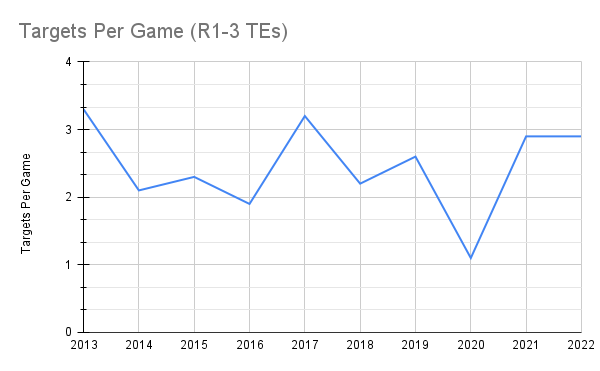
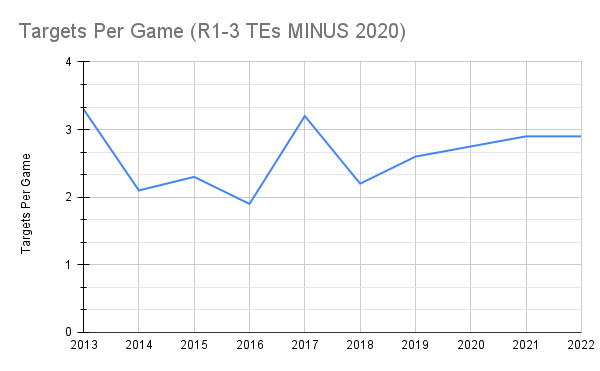
It makes sense that tight ends are becoming more relied upon as the league trends pass-happier and College football also adapts to that change, generally speaking, tight ends find their way into the NFL as more complete pass-catchers and as more athletic players now than they did 10 years ago. Removing the Covid year and Jordan Reed’s huge outlier 2013 season, we can see that typically now tight ends drafted highly are providing more yards after the catch than they were eight to nine years ago.
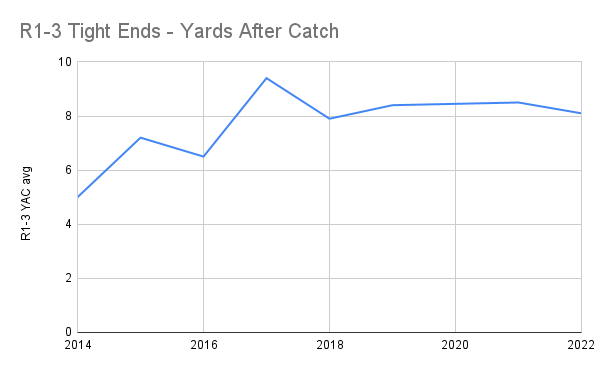
The 2017 class pops in metrics time and time again, so let’s pause for a moment and look at the players that came out that year.
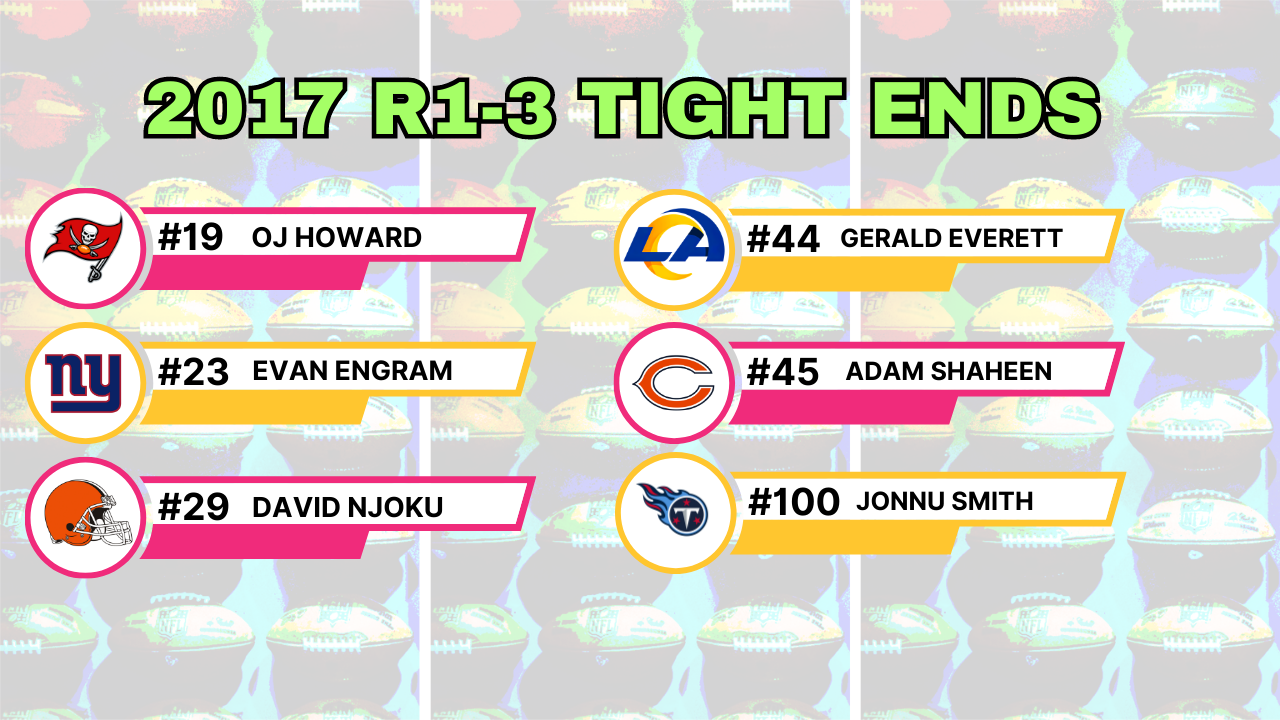
This class might be the most comparable to how the current rookies are being hyped up, with six players being drafted with the first 100 picks. NFLmockdraftdatabase.com currently projects five tight ends to be selected in the first two rounds of the 2023 draft. 2017 was one of only three years in the last ten where the top three-round average for tight ends was over 4.0 Half PPR points per game, with a ten-year high of 4.8. That year Evan Engram had one of the best rookie tight end seasons of all time, finishing as the TE4 with 9.4 points per game, well clear of the rookie TE2 OJ Howard (TE18 - 6.3/gm) and rookie TE3, George Kittle (TE25 - 5.2/gm) who was drafted at pick 145 of the draft. To put this further into perspective, 41 different tight ends scored over 4.0 points per game in 2022, so what we’re looking for in fantasy football is a lot greater return than that what these rookies were offering in what upon reflection was a very good class.
Since the start of the 2000 season, 384 tight ends have played in the NFL and recorded a stat of some form during their rookie season. Of those 384 only two have scored 10.0 or more points in their rookie seasons (Dominique Byrd & Jordan Reed). Filtering things slightly to adjust for only the players who were drafted, we get a list of 255 tight ends. Within this amount, 43.5% recorded an average of less than 1.99 points per game and only 12.1% scored over 6.0 Half PPR points per game.
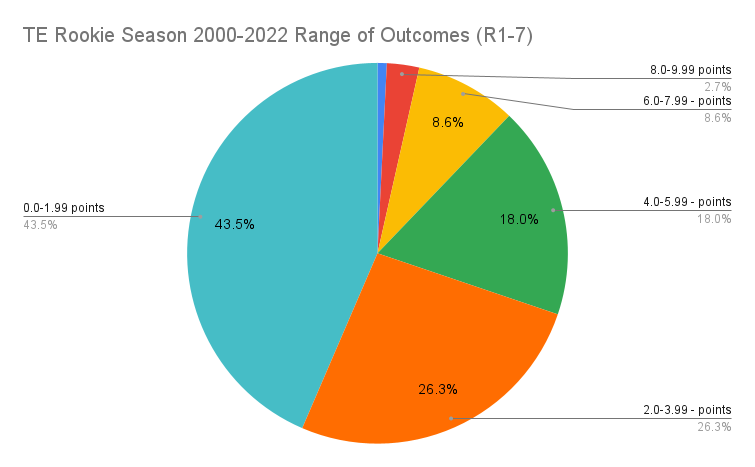
Filtering these results for rounds one to three, where we’re more typically interested in the players, there are 106 tight ends to examine. 25.5% failed to exceed 1.99 Half PPR points per game and a total of 56.6% failed to put an average of 4.0+ on the board. Where these tight ends with better draft capital did succeed though, is that a greater number of them secured a higher amount of 6+ points, with 21.7% managing to achieve or surpass this point. In raw numbers that translates to 23 tight ends, that have scored 6.0 Half PPR Points or more in their rookie season since the start of the millennium.
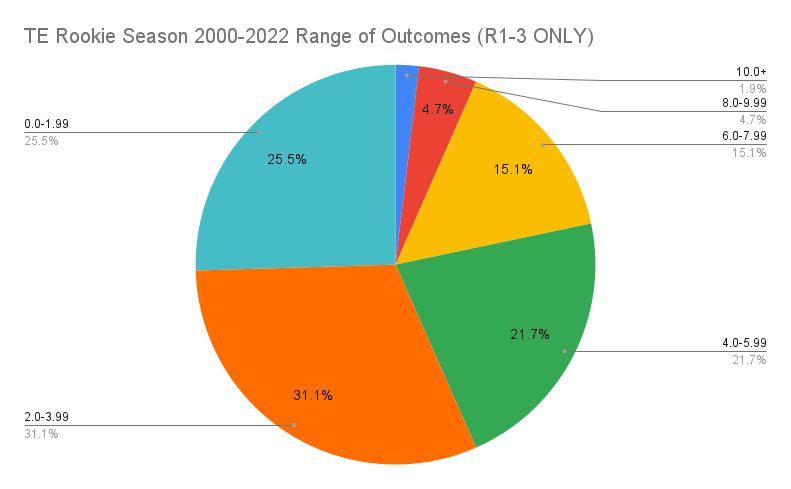
Conclusions
No matter which way we look at the numbers they rarely point to a pretty picture. Tight ends are being slightly more productive with the ball in their hands than they were eight or nine years ago, but that production isn’t enough to keep them on the field a significant amount more than previous rookie classes were, as we can see from the historical snap percentages barely changing.
This time of year it can be easy to get swept up in the rookie hype, and there are landing spots that could be good for this class, but if you’re expecting more than 7.9 points per game then they will achieve in the top 6.6% percentile when compared to their peers over the last 22 years. For best ball, we can live with this if there are spike weeks, as long as we are mindful of what we expect from these players when we draft them. Picking any rookie as part of a two-tight-end build will be a risky move and they’re safer bets as part of a three-tight-end structure.